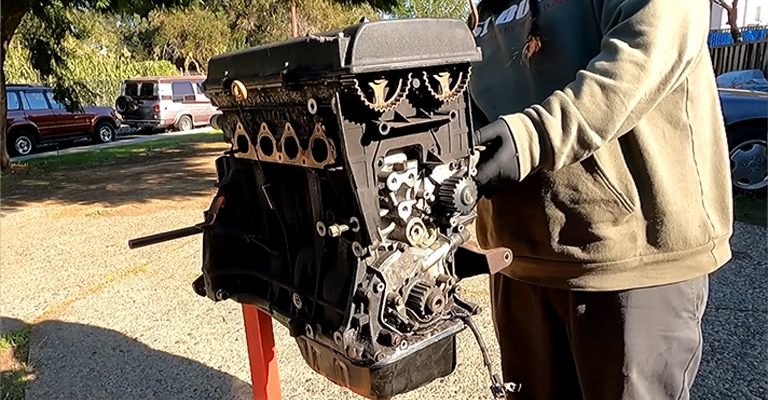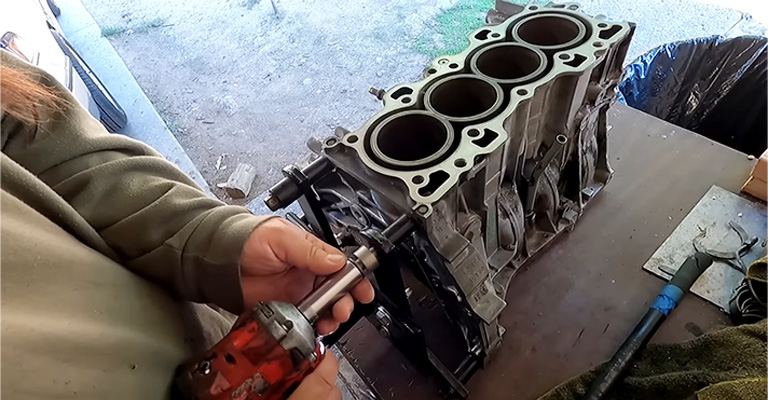The Honda B20Z2 engine is a 2.0-liter inline-four engine that was first introduced in the late 1990s. This engine has been widely used in the Honda CR-V and Honda Orthia vehicles and is known for its reliability and performance.
Understanding the specs and performance of the B20Z2 engine is crucial for anyone considering using this engine in a vehicle. In this article, we will provide a comprehensive overview of the Honda B20Z2 engine, including its specifications, performance, and applications.
By the end of this article, you will have a better understanding of the Honda B20Z2 engine and what it can offer.

Honda B20Z2 Engine Overview
The Honda B20Z2 engine is a 2.0-liter inline-four engine that was first introduced in the late 1990s. This engine was designed for use in the Honda CR-V and Honda Orthia vehicles, and it is known for its reliability and performance.
The B20Z2 engine was designed to be a non-VTEC engine, meaning that it does not have Honda’s VTEC (Variable Valve Timing and Lift Electronic Control) system.
Despite this, the engine still delivers impressive performance, thanks to its well-designed cylinder head and high-compression ratio.
The B20Z2 engine has a displacement of 2.0 liters, or 120.4 cubic inches, and it produces 148-150 horsepower at 6200 RPM. It also produces 140 lb-ft of torque at 5500 RPM.
The engine has a rod length of 137 mm and a compression ratio of 9.4:1 (P8R) or 9.6:1 (P75). The bore x stroke measurement is 84mm x 89mm, and the redline for the engine is 6800 RPM.
In terms of performance, the B20Z2 engine is a reliable and capable engine. It offers a smooth and responsive driving experience, with plenty of power and torque available across the RPM range.
The engine’s high-compression ratio also contributes to its overall performance, as it allows for more efficient combustion and more power from each engine cycle. However, some drivers may find that the B20Z2 engine lacks the high-RPM power and excitement of VTEC engines.
Overall, the Honda B20Z2 engine is a solid choice for those looking for a reliable and capable engine for their vehicle.
Whether you are driving a Honda CR-V or Honda Orthia, or using the B20Z2 engine in another vehicle, you can expect reliable performance and a smooth driving experience. With proper maintenance and care, the B20Z2 engine will provide many years of reliable service.

Specification Table for B20Z2 Engine
| Specification | Value |
|---|---|
| Engine Type | B20Z2 Inline-Four |
| Displacement | 2.0 Liters (120.4 Cubic Inches) |
| Power | 148-150 HP at 6200 RPM |
| Torque | 140 lb-ft at 5500 RPM |
| Rod Length | 137 mm |
| Compression Ratio | 9.4:1 (P8R) / 9.6:1 (P75) |
| Bore x Stroke | 84mm x 89mm |
| Redline | 6800 RPM |
| VTEC | Non-VTEC |
Note: This table provides a summary of the key specifications for the Honda B20Z2 engine. The values provided are for reference only and may vary depending on the specific application of the engine.
Head and Valvetrain Specs B20Z2
The head and valvetrain specifications for the Honda B20Z2 engine are as follows
| Specification | Value |
|---|---|
| Cylinder Head Type | DOHC |
| Valves Per Cylinder | 4 |
| Valve Diameter (Intake) | 28.5 mm |
| Valve Diameter (Exhaust) | 25.5 mm |
| Valvetrain Type | Chain-Driven Dual Overhead Camshafts (DOHC) |
Note: These specifications are for reference only and may vary depending on the specific application of the B20Z2 engine.
The cylinder head and valvetrain design contribute to the engine’s overall performance and efficiency, and the DOHC and four valves per cylinder help to optimize airflow into and out of the engine’s cylinders.
The Technologies Used in
The Honda B20Z2 engine utilizes several technologies to optimize its performance and efficiency, including
1. Dual Overhead Camshafts (DOHC)
The B20Z2 engine features a DOHC valvetrain design, which allows for improved airflow into and out of the engine’s cylinders. This results in improved power and efficiency.
2. High-compression Ratio
The B20Z2 engine has a high-compression ratio of 9.4:1 (P8R) or 9.6:1 (P75), which allows for more efficient combustion and more power from each engine cycle.
3. Forged Steel Connecting Rods
The connecting rods in the B20Z2 engine are made from forged steel, which provides improved strength and durability compared to cast rods.
4. Electronic Fuel Injection
The B20Z2 engine features electronic fuel injection, which provides more precise fuel metering and improved performance compared to carbureted engines.
These technologies, along with the engine’s well-designed cylinder head and non-VTEC design, help to make the Honda B20Z2 engine a reliable and capable engine for a variety of applications.
Performance Review
The Honda B20Z2 engine offers good performance, with a power output of 148-150 horsepower at 6200 RPM and 140 lb-ft of torque at 5500 RPM. The high-compression ratio and DOHC valvetrain design contribute to the engine’s efficiency and power output, allowing it to provide good acceleration and passing power.
The B20Z2 engine is also reliable and durable, thanks in part to its forged steel connecting rods and electronic fuel injection system. The engine has a redline of 6800 RPM, which provides ample opportunity for high-revving performance.
However, the B20Z2 engine is a non-VTEC design, which means it does not have Honda’s Variable Valve Timing and Lift Electronic Control (VTEC) technology.
This limits the engine’s ability to produce high levels of power at high RPM compared to VTEC-equipped engines, but it is still a capable and reliable engine for everyday use.
The Honda B20Z2 engine is a well-rounded and reliable engine that offers good performance and efficiency. While it may not offer the high-performance capabilities of VTEC-equipped engines, it is still a good choice for those who want a reliable and capable engine for everyday use.
What Car Did the B20Z2 Come in?
The Honda B20Z2 engine was found in the USDM (United States Domestic Market) Honda CR-V and the Honda Orthia. It was also used in some other Honda vehicles in various markets.
The B20Z2 engine was known for its reliable performance and efficiency and was a popular choice for Honda CR-V owners.
B20Z2 Engine Most Common Problems
Based on various online forums and user experiences, some of the most common problems associated with the B20Z2 engine include
1. Hunting idle
As mentioned earlier, this refers to the engine revving up and down repeatedly, which can be caused by vacuum leaks or a dirty IACV.
2. Engine misfire
This can be caused by a number of factors, including a faulty ignition system, a clogged fuel injector, or a problem with the engine management system.
3. Engine oil leaks
Engine oil leaks can be caused by worn-out seals, gaskets, or other components.
4. Excessive oil consumption
This can be caused by worn engine components or poor engine design.
5. Engine overheating
This can be caused by a number of factors, including a clogged radiator, a failing water pump, or a malfunctioning thermostat.
It’s important to note that these problems may not be specific to the B20Z2 engine and may occur with other engine models as well. Additionally, the frequency and severity of these issues can vary based on the usage and maintenance of the vehicle.
Other B Series Engines-

Leave a Reply